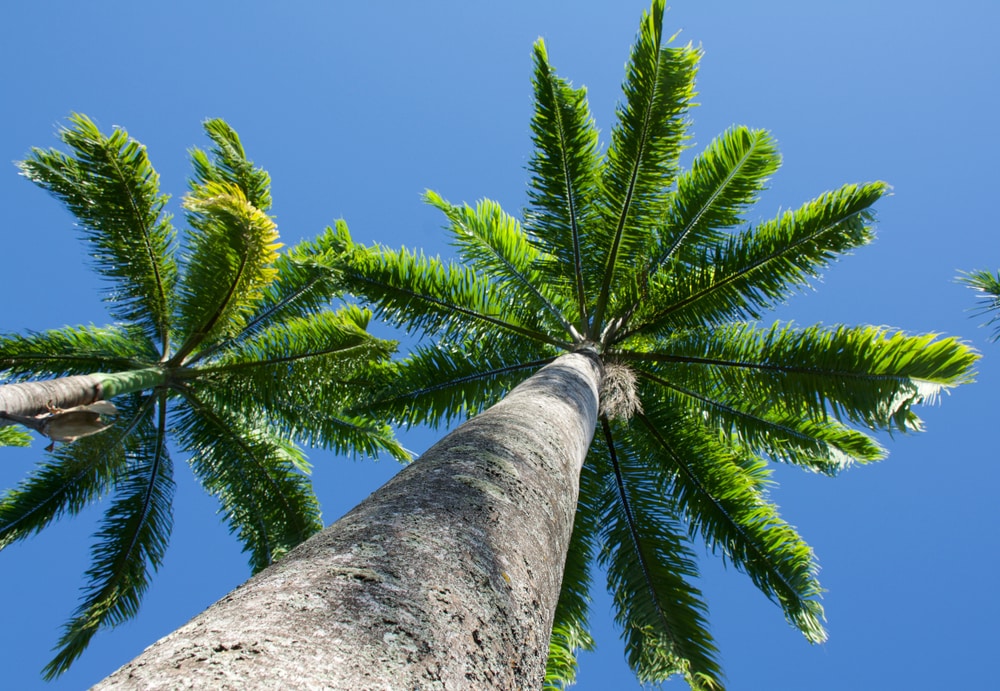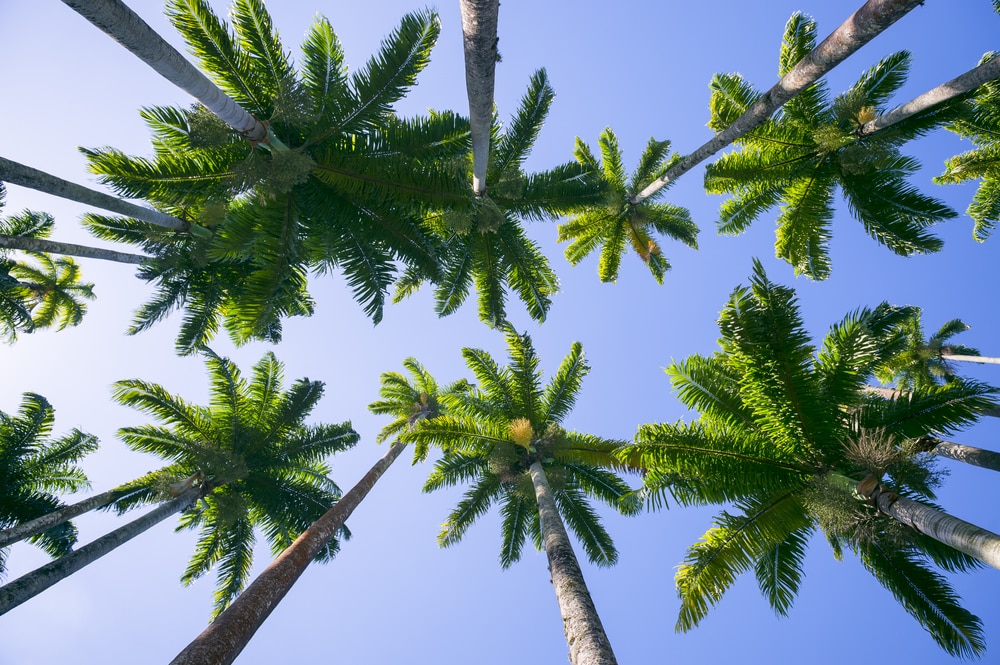With its regal stance and lush, green leaves, the royal palm tree is an eye-catching addition to any home or landscape. These beautiful trees are native to Mexico, and they have been widely planted because of their tropical look. They are popular for being hardy provided that they are given the proper care.
In planting this tree, you would need to consider its size when it matures as it can grow up to 125 feet tall. It is also famous for its evergreen fronds that can be up to 15 feet long, with vibrant green leaves of up to 8 inches long.

| Botanical Name | Roystonea regia |
| Common Name | Royal Palm |
| Plant Type | Perennial |
| Flower Color | White or yellow with pinkish anthers |
| Size When Mature | 1500 Inches |
| Bloom Time | Summer |
| Sun Requirements | Full Sun |
| USDA Hardiness Zones | 10-11 |
| Soil PH Range | 7.5 or less |
| Soil Type | Acidic to slightly alkaline, well-draining |
| Water Needs | Low |
| Native Area | Mexico, Central America, the Caribbean, Florida |
What You Need to Know About Royal Palm Tree
The Royal Palm Tree is an attractive tree that is perfect for providing shade and adding appeal to your landscape. It is a fast-growing tree and is widely planted as an ornamental. The Royal Palm Tree has a rough gray trunk but you may notice that the top part is smooth and green.
It produces creamy white flowers on a stalk in summer and then will then blossom purple to black fruits that are half an inch in size. However, these fruits are not edible. These palm trees are relatively easy to grow and they flourish very quickly, especially with the right care.
How to Care for Royal Palm Tree
Here’s everything you need to know about growing and caring for a thriving Royal Palm Tree:
Light
This palm is a sun-loving tree and enjoys being under the sun. They get bigger very rapidly when grown in full sun. They can also make for great houseplants because they can tolerate low light but will not thrive as well as they would in brighter conditions. It would need five to six hours of sunlight every day so make sure to place it in a sunny spot in your home.
Water and Soil Needs
The Royal Palm Tree grows best in any type of soil as long as it is well-draining. It’s not picky when it comes to soil and you can use sand, clay, or loam as long as it has a pH of 7.5 or less.
For newly planted ones, you will have to water them deeply every week until the root system is established after three months. For established palms, watering them every two to three weeks will be sufficient, especially when it’s hot and dry outside.
Temperature Requirements
Very few palms can bear cold temperatures but this tree can survive in USDA zones 10 and 11. It is cold hardy and can withstand low temperatures even down to 28°F. But, if the temperatures drop below freezing, it will kill the leaves and damage the tree.
Fertilizer
The best fertilizer to use on a Royal Palm Tree is a slow-release fertilizer that is specifically formulated for palm trees. A fertilizer with a ratio of 8-2-12 will be perfect and will encourage healthy growth. You should feed your palm quarterly and make sure to not overfertilize as this will cause burning.
Common Diseases
Royal Palm trees are notable for being resistant to many pests and diseases. However, this that not guarantee that they will not be affected by any. The most common pest of this palm tree is the Royal Palm Bug which infests the tree and infects the leaves.
It sucks the sap of the fronds creating a tattered look on the leaves. It doesn’t do much and rarely kills the tree so most of the time, there is no urgent need for pest control. However, it causes cosmetic damage that can be very unsightly.
Another known pest is the Palm Leaf Skeletonizer. As the name suggests, this pest skeletonizes the leaves of the tree by eating away at them. Unfortunately, the frond dies as the caterpillar eats away both the upper and under surfaces of the leaves. To deal with this, you can wipe away the infected area with a damp cloth or water the frond to wash away the caterpillars.
All types of palms are susceptible to Ganoderma Butt Rott and the Royal Palm Tree is not an exception. This is a silent killer that shows no early signs. By the time the symptoms appear, it is already rotten inside and is already too late to save the tree. The Ganoderma Butt Rot infects the tree at the base or butt of the trunk and slowly kills it from the inside. The tree will start to lean to one side and eventually, the trunk will collapse. There is no known cure for this disease and once a tree is infected, there is no saving it.
Royal Palm Tree Propagation
Propagation by seeds will provide the best results. It is ideal to take fresh seeds from the plant. Wait until the fruit on the plant is ripe and brown in color. The fruit capsule should be removed first then allow it to dry completely before opening it to get the seeds.

